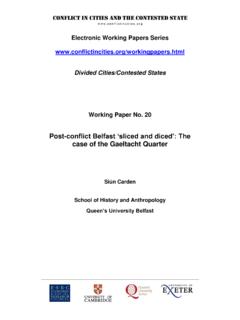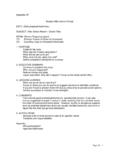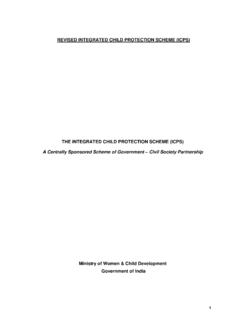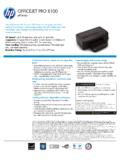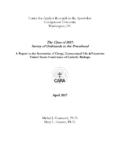Transcription of May 2012 CONFLICT IN CITIES
1 CONFLICT IN CITIES AND THE CONTESTED STATEE veryday life and the possibilities for transformation in Belfast, Jerusalem and other divided citiesCARA Baghdad exchange programmereport prepared by Andrew HoolachanFrom 8 to 16 December 2011, Lecturers Mohammed Isam and Ahmed Louay from the Technical University of Baghdad and Dr. Akram Al-Akkam from Newcastle University, attended a week-long workshop at the Department of Architecture, University of Cambridge under the supervision of Dr. Wendy Pullan and the CONFLICT in CITIES [CinC] research group. This was facilitated by CARA The Council for Assisting Refugee Academics, a charity set up in 1933 by William Beveridge, to help academics whose careers were threatened abroad by violence and oppression. CARA has an exchange programme specifically for Iraqis. Its aims are to reintegrate academics and to discourage them from fleeing to neighbouring countries, to maintain talent within the December 18th 2011, during the scholars visit to Cambridge, the War in Iraq was officially declared over by President Obama, providing the participating scholars with a timely symbolic gesture to enable reflection on the myriad of problems the CONFLICT brought to the 1200 year old City of Baghdad, the home of our scholars and 7 million inhabitants.
2 There are no official records of the civilian death toll in Iraq, nor Baghdad, but since the televised shock and awe precision-bombing of Baghdad on the night of February 23rd 2003, it is estimated that hundreds of thousands of people have been killed and millions displaced (IBC project, 2012; Refugees International, 2012). But this says nothing for the irrefutable damage done to the buildings, infrastructure and public spaces of Baghdad; after all, it is CITIES themselves that are often targets and sites of warfare. Thus whilst at Cambridge, the scholars were to plan a research project that would enable them to understand how the war had impacted on their city, learning from research methods that had been used by CinC in places like Jerusalem and Belfast in order to gain a rich, deep and meaningful understanding of everyday life in Baghdad since the American 2012 The schedule of the workshop involved a preliminary day in the boardroom in which individual scholars presented their research methodologies.
3 There were then a series of meetings with project researchers and PhD students and a field-trip to London. At London Metropolitan University s School of Architecture participants were shown a presentation about the analysis of informal urban spaces in India which was followed by a discussion of the advantages and disadvantages of using qualitative and quantitative methods. The days after London were spent choosing a site for analysis in Baghdad that the scholars and their students would study in the following months. The team pinned up several images of the city, allowing us to ask questions and discuss what was happening on the ground. For example, Baghdad has been heavily affected by temporary blockades and other obstructive walls and fencing for security purposes and this has dramatically altered how people move around the city, but also how they interact Mohammed presents a history of Baghdad at the workshop CONFLICT IN CITIES AND THE CONTESTED STATEE veryday life and the possibilities for transformation in Belfast, Jerusalem and other divided citieswith edges and bridges.
4 But such disruptions cannot be captured by mapping or the birds-eye view alone, and need to be understood from being immersed in the situation. Therefore photography, walking, observing and interacting become incredibly useful primary resources; threaded together, they offer a rich and complex understanding of the the time of writing this article, bloodshed has continued in Baghdad since American departure, with splinter Sunni and Shia groups claiming responsibility for numerous insurgencies and civilian deaths. This has lead to two major considerations that the scholars must undertake when applying CinC research methods in Baghdad. The first, is that there are a variety of reasons as to why students from the University will not be allowed to conduct certain methods. Permissions must be obtained to carry out any type of fieldwork, including the use of cameras. They may also stand out as targets of violence in a tense social context.
5 To overcome this, the scholars will get their students to document the area using photography only, and use them as an aide memoir so that they can write down and elaborate on their observations experiences in private. The site chosen is a bustling, narrow street of bookshops and cafes running close to the Northern bank of the Tigris, Mutanabbi Street, which the scholars told us is popular with the more literate citizens in Baghdad. Unfortunately in March 2007, it was the site of a serious bombing and many people were killed. Another innovative way of overcoming barriers to research We learned to deal with the architecture as a field of knowledge which intervene[s] with other [fields] of knowledge like psychology, economics [and] human behaviour and considered these issues in the research Mohammed I gained a lot of things such as; your system of thinking while dealing with academic scientific research, your approach and methodologies. In addition, the workshop provided an opportunity for researchers from both projects to further their comparative analysis of Baghdad and other contested CITIES .
6 AhmedThe group in discussion at the Baghdad is to interview Taxi drivers. As nearly everyone in Baghdad takes Taxis, this provides information about how transportation routes in the City have changed due to the CONFLICT and is much safer than conducting research on foot in a second, broader question, relates to what is often considered to be about power; who is speaking for whom? Not only is Baghdad fragmented by physical infrastructural damage and/or interventions, by American and Iraqi, by literate and lay-person, it is also divided religiously between Sunni and Shia Muslims, the source of much of the insurgency that followed the American-led invasion and the removal of Saddam Hussein s regime. This means that there are some limitations on two fronts how to do urban research when one s identity is already enmeshed within a CONFLICT , and secondly whether or not we represent the voices of the other in a truthful it stands then, the violence in Baghdad continues and the scholars will be limited in how they can conduct research.
7 There is a future plan to regenerate the area of Bagdad on both North and South sides of the Tigris, called the Baghdad Renaissance Plan, headed by Dr. Hisham Ashkouri. Perhaps when stability allows, the scholars can critically analyse this large urban development project with the full range of approaches discussed on their visit to Cambridge.
